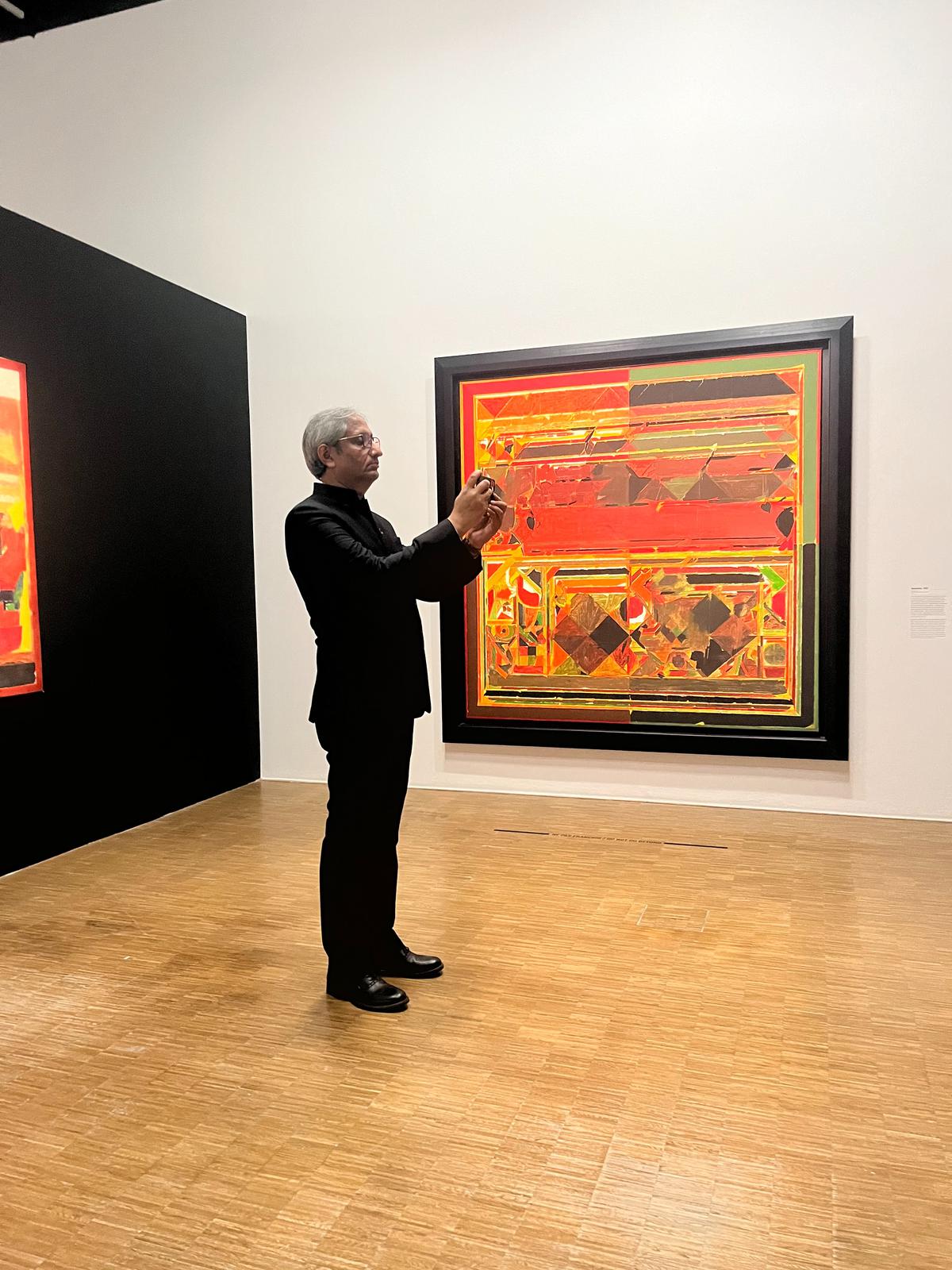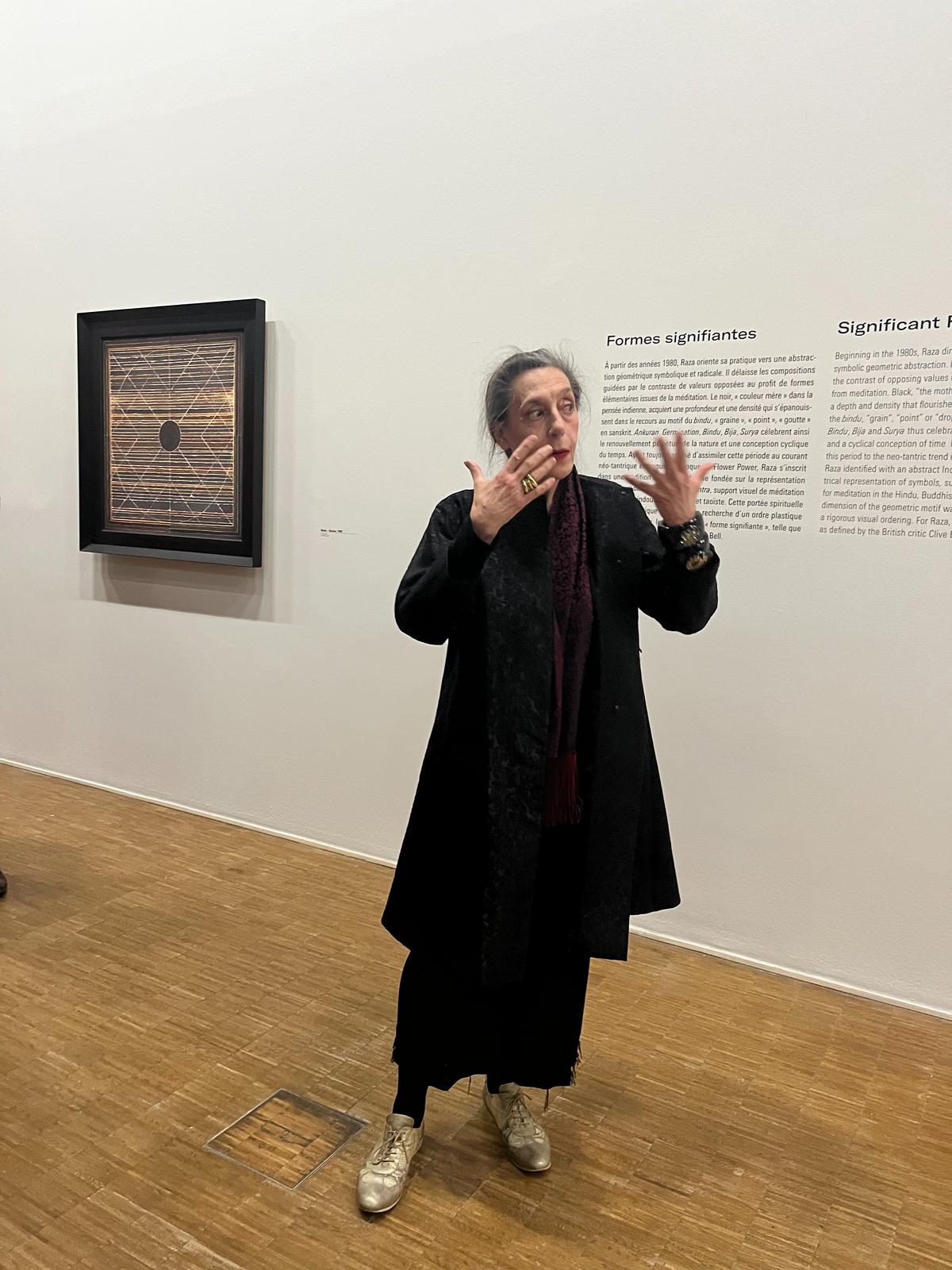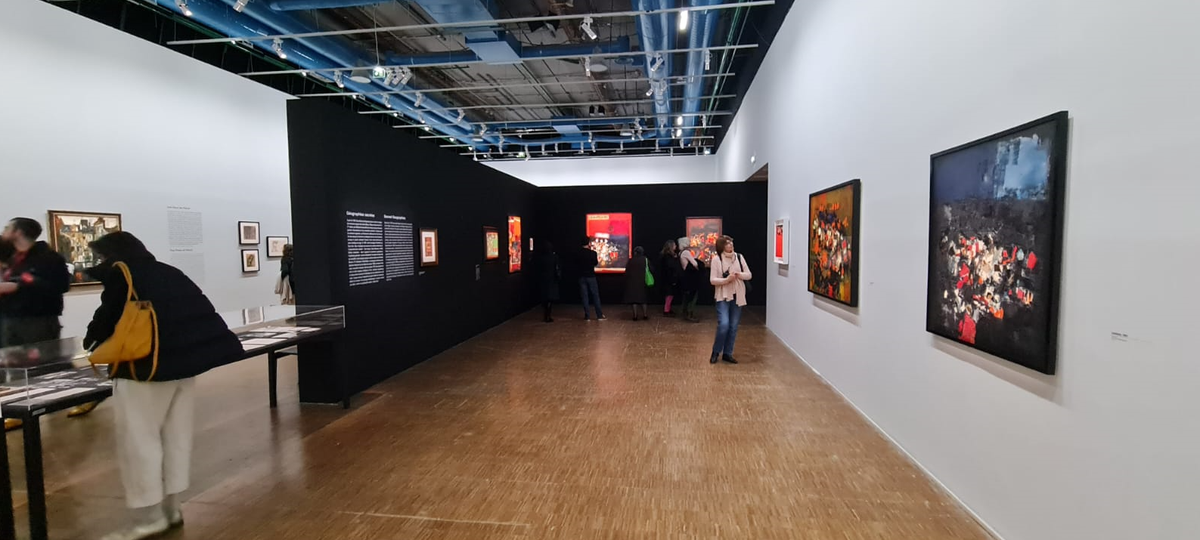Entering the Center Pompidou, one of my favorite places in ‘Gay Paris’, built by architects Renzo Piano, Gianfranco Franchini and Richard Rogers, I felt an extraordinary sense of pride. I was walking with a spring in my step to visit the first ever solo exhibition by an Indian artist at this prestigious centre. I am, of course, talking about Syed Haider Raza (1922–2016), the celebrated Indian artist who was as powerful in India as he was in France, a country with which he had a long and memorable association, lived and worked there from 1950 to 2011.
read also ‘Raza was secular with global outlook’
Having said that, I’m not too fond of comparisons. So, when my friend and English architect, Peter Camp, who was accompanying me, referred to Raza’s paintings as reminiscent of work by the Latvian-American abstract artist Mark Rothko, I was taken aback. Personally, I’ve always loved how Rothko used color to create his wide swaths of abstract paintings, but in my mind, Raza goes much deeper than simply playing with form and application of color. Is. He was a sensational painter, a master of light. His canvases shine with an incomparable luster. So it was no surprise that hundreds of people turned out for the opening ceremony on Valentine’s Day. Four days after the opening, there were no fewer than 1,000 visitors.
Oil painting ‘Ondhu, Heart is not ten or twenty’ by Raza, 1964 | Photo credit: Walter Silver / Peabody Essex Museum, Massachusetts
free flowing thoughts
It was an eye-opener to realize how many people Raza knew personally or touched through his work. The exhibition was specifically designed keeping in mind the free-flowing ideas and concepts that were so much a part of Raza’s artistic work. Raza’s early works at the Sir JJ School of Art were on paper, collected in elegant vitrines and a large number of canvases displaying his entire body of work.
Raza was born in Babaria in Mandla district of Madhya Pradesh, and after a stint at the Sir JJ College of the Arts in Mumbai, he went to Paris on a French government scholarship to study at the prestigious École des Beaux-Arts in Paris . In France, he was accompanied by Akbar Padamsee and Ram Kumar, who later came to be counted as important names in Indian contemporary art. Raza made his home in Paris and in 1959 married Jeanne Monguillat, a fellow French artist. When Janine died of cancer, he returned to India permanently in 2010 and continued to live and paint in Delhi until his death in 2016. For his wish to be next to his father at his birth place in Mandla.

Magsaysay award winner and journalist Ravish Kumar looking at Raza paintings on display at the Center Pompidou. , photo credit: alka pandey
Despite his attachment to art and artists from other countries, Raza was a man who also deeply loved his country. He repeatedly dipped into the classical traditions of Indian art, be it Chola bronzes, miniatures, or iconic art. point, which became a recurring leitmotif in his work.
‘The Point Was That Moment’
There is much to be said about his life and art, and some of the most thought-provoking conversations took place at the Center Pompidou. Two curators, Catherine David and Diane Tourbet, have taken almost seven years to put together the exhibition. Tourbet says, “For Raza, the dot That moment was the cle de vot, or the bedrock, on which his paintings rest and that’s why we ended the exhibition the dot series.”
Raza’s long-term friend and secretary of the Raza Foundation, Ashok Bajpai eloquently shared several anecdotes, bringing alive the artist’s unmatched spirit of creativity and camaraderie. Vajpayee talked about Raza’s admiration for Austrian poet Rainer Maria Rilke. One story goes like this: Before starting a painting Raza used to mutter something with folded hands in prayer in front of the canvas. “When I asked him what he was chanting, he said it was a poem by Rilke; To listen to that inner voice of silence.

Catherine David, Co-curator of the Raza Exhibition. , photo credit: alka pandey
I also met Sujata Bajaj, a Paris-based Indian artist who was one of Raza’s closest associates. Once we found that both of us were wearing scarves designed with the Raza print, gifted to me by the man himself, we set out on a trip down memory lane. Bajaj told me that she knew the artist closely from 1988 to 2008. “When I moved to Paris in 1988, he befriended me, and I began to call him my guardian angel. Ten years later, Raza used to call me his guardian angel.”
There were many shared moments of nostalgia and affection for all who gathered at the Center Pompidou, be it avid collectors like Kiran Nadar, Swati Piramal, Ashwin Rajagopalan or stalwarts like Reena Lath, Payal Kapoor and Ranjana Steinrück. Emmanuel Lenain, the French ambassador to India, made it a point to be present at the opening ceremony in Paris and he too spoke about the strong Indo-French ties through the soft power of text and image.

A view of the gallery. , Photo credit: Ashwin Rajagopalan
A series of programs were organized in the initial days of the exhibition. I was particularly struck by the way Ashwin Rajagopalan deconstructed the Raza repertoire using newspaper articles, calendars and letters. Her artistic journey is discussed through the different lenses of writers, curators and art historians such as Homi Bhabha, Deepak Anant, Letitia Zecchini, Atul Dodiya, Rahab Allana, Rubina Karode, each offering their own singular interpretation. Bhabha talked about the double advancement in Raza’s work: advancement from India and advancement from France.
a busy century
The Raza Foundation has had a very busy 2022 as it celebrates 100 years of Raza. Kiran Nadar Art Museum organized a spectacular exhibition in September 2022 at Bikaner House. In June 2022, Jehangir Nicholson Art Foundation organized a beautiful exhibition ‘Zameen’ in Mumbai.
The Foundation is now planning two more exhibitions in Dubai and New York at the end of March 2023. A certain disappointment is evident for all fans of Raza and the Indian art fraternity. Vajpayee laments, “Neither the National Gallery of Modern Art nor the Lalit Kala Akademi or even the Bhopal Bhavani, which houses the largest public collection of Raza’s works, has done anything to commemorate his centenary celebrations.” Haven’t done anything for it.
While Raza’s 91 artworks and 83 documents on display at the Paris retrospective are truly special, I wish more work from the 90s and the turn of the millennium could be included. The time when he had mastered his voice, his love for his motherland and the language of art.
The exhibition is on till May 15, 2023.
The author is a writer, art historian and curator.